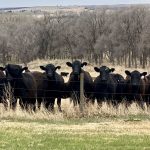Bringing wolves into Colorado: Is it the best use of state’s money?

The wolf situation in Colorado is at the point where commonsense needs to prevail. Has the reintroduction of wolves made the lives of a person or species better? Maybe it has and I haven’t heard about it. But I would be highly suspicious of anyone who would attempt to make that argument. And I would certainly argue in defense of the farmers and ranchers whose lives and livelihoods have been upended by the increasing number of wolves in Colorado.
In a state where the largest metropolitan area is plagued by homelessness and crime, using precious dollars to import wolves into Colorado seems unreasonable to me.
Paying to bring the wolves in and, at the same time, paying ranchers for livestock lost to wolf depredation makes no sense whatsoever. Not to mention that the payments to livestock producers don’t cover the trauma caused by wolves harassing livestock, leading to weight loss and lower birth weights, and the pain and suffering that ranch families experience in the wake of these wolf attacks.
And who are the idiots who said that the wolves would prefer to dine on wildlife, especially sick elk.
I’m sorry, but if I’m a wolf and I have a choice between chasing down an elk and chasing down a cow, I’m probably going to go for the cow because it would be the easiest to catch. And, if it has a calf ambling behind it so much the better.
To make matters worse, in many of these instances of wolf depredation the wolves don’t even eat the animals, and some of the animals that are wounded must be put down because their injuries are so severe.
I hate to make this distinction, but in some cases wolves are like dogs — and I must emphasize that I hold no ill will against dogs — they will attack deer, squirrels, porcupines, badgers, and other animals because they are curious and rambunctious, not because they are hungry. Some dogs will even go to so far as to attack bears, which some hikers have discovered much to their horror.
Although the situation in Colorado is dire, it is even more pronounced in California, which should serve as a bellwether for Coloradoans. An article that we recently ran in The Fence Post, written by our colleague Carrie Stadheim, editor of Tri-State Livestock News, chronicled wolf depredations in California where 37 head of cattle were killed on one ranch this year. The ranch is owned by Paul Roen, a Sierra County supervisor. At one point, the California Department of Fish and Wildlife were putting out food for the wolves at a den site thinking it would minimize the number of livestock kills, Roen said. But the wolves continued to kill livestock, leaving the carcasses behind. Does this sound like commonsense to you?
A Sierra County sheriff told a local news affiliate that there were 72 confirmed and probable animal attacks this year, and another 20 to 30 additional livestock kills that are likely from wolves.
As wolf populations grow, commonsense tells me the depredations will increase in Colorado as they have in California.
I know I’ve harped on on the wolf reintroduction in Colorado many times, but now might be a good time to double down about its impacts on livestock producers and taxpayers. In an effort to end the madness in Colorado, the Colorado Advocates for Smart Wolf Policy is again collecting signatures to pass a measure to end Colorado wolf reintroductions in the state and getting it on the November 2026 ballot. The initiative failed to collect enough signatures in its first attempt.
In addition to signing this petition, livestock producers need to have conversations with people who don’t know about the wolf situation in the state and how it has impacted their livelihoods and get them to sign the petition.
There is also a federal effort underway to get gray wolves delisted from the Endangered Species Act. We at The Fence Post will be keeping an eye on that process.






